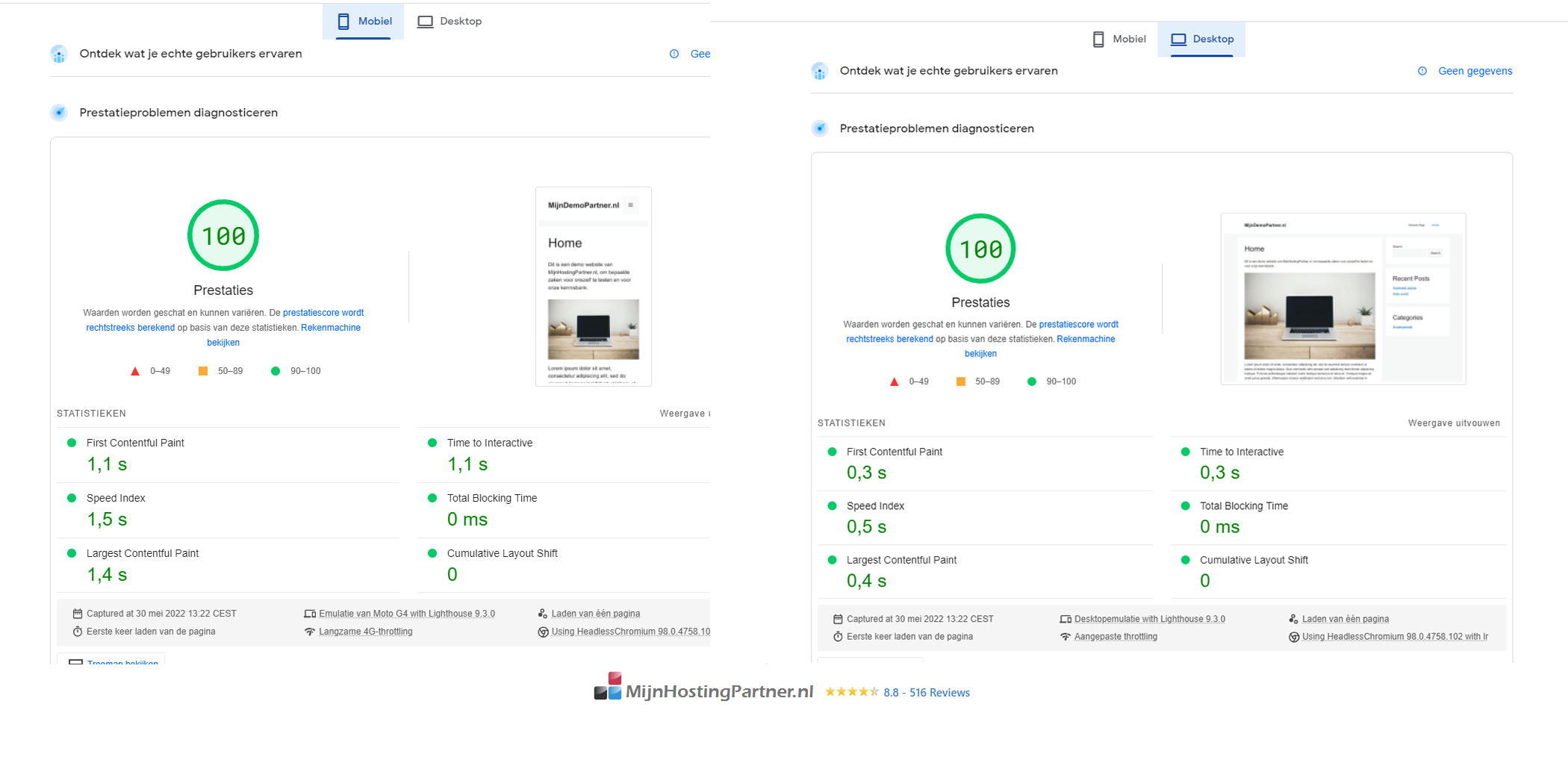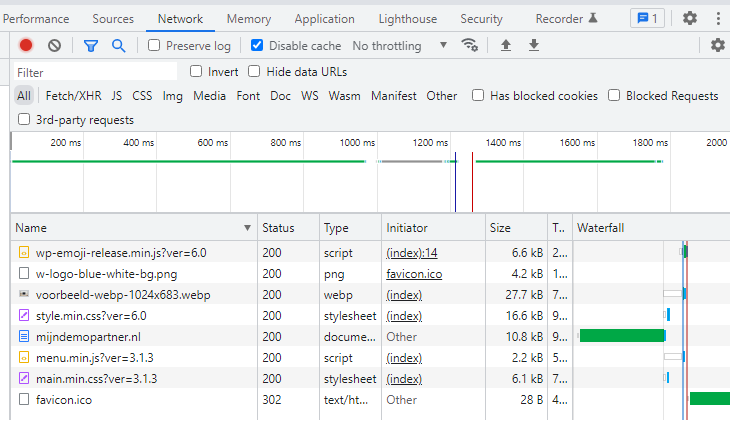
Score 100 out of 100 on Google PageSpeed Insights
It's no secret by now that your website needs to be fast for many reasons. The most important one is to better serve your users and visitors, and the second is the potentially higher score in search engines like Google. 100 out of 100 is of course the goal of every website, but it's not always entirely realistic. Let's take a look at the different factors that can influence this. And how we achieved this with a simple demo website.
Number 1 on the ranking is of course the hosting you use for your website. To make your website available as quickly as possible from our Dutch data centers, the choice of package is very important. We offer different packages for different purposes. However, if you want to work with a CMS like WordPress or a similar content management system, you should choose a Total SSD package. This will give you enough space to host everything related to your website at an affordable annual price. From the email, database and of course all the files of your website. The example we're referring to in this blog post was built with WordPress, runs on a regular Total SSD 25 package, and uses the MariaDB database option included by default.
What technology do you use for your website?
There are, of course, several ways to build a website, most people opt for a WordPress website. WordPress is known for being slow, but this notion is not entirely true. WordPress is often slowed down by the choice of theme and the installation of many unnecessary plug-ins. These are the two main reasons why a WordPress website can be slower than other options. As long as you critically examine each plug-in you want to install and carefully consider your theme choice, you can make your websites faster than ever.
If you're using a different technology like Joomla, Drupal or Umbraco , the same rules apply. Go through your plug-in list and take another critical look at your theme. With most content management systems, you have the option to use caching, which can also make a big difference.
It's also advisable to always use the latest technology, which means the latest version of your content management system, plug-ins and themes. Also look at the background to see which PHP version or ASP.NET version is selected. This will ensure that your website has a better foundation to get faster. PHP versions have a big impact on this.
How many sources do you load?
Sources that are loaded from outside will slow down your website. And thus, for a lower score in the Google PageSpeeds Insights test you can run. The problem with this is that many websites use statistics tools, advertising, and many other sources. Like an external source for the website's font.

This can be seen in the scores that the PageSpeed test shows, and can also be seen in the browser tools. So you can quickly see what exactly is loading. And then you can look to see if you can't do it differently, if you can leave that out, or if loading locally is also an option. Here, in most cases, you need to be familiar with looking into the code and the source code of the website. And can therefore be a bit daunting for beginners. However, with browser tools, you can easily see what's going on, and often achieve what you want without changing the file. Read on below to quickly fix the most common slowdowns.
Find and fix error messages on your website
Common slowdown factors are 404 messages or certain sources that cannot be found. This can be caused by a number of things, such as rewrite rules not being applied via web.config, a MIME type like .woff2 not yet being added, and more. Or the wrong movement of an image or source causes this message. You can see this in detail by opening the browser tools in your favorite browser. You can do this by pressing F12 in Windows. Then navigate to the Network tab to see exactly which sources are causing problems. After resolving these issues, you will see that your website already shows a difference in Google PageSpeed Insights speed score.
WebP images and modern layouts
Another point we changed on the demo website is the use of a WebP image on the homepage. This is the latest file format, specially designed by Google to generate the smallest file possible without compromising too much on quality. This makes it the first choice for any website that wants to offer images on their website. It will therefore be of interest to all. WebP images are supported by all modern browsers. Some users who have never updated their browsers may not be able to see your image. However, there are precautions to prevent this.
By more modern formats we mean that you also use the latest techniques again, so for the fastest database connection don't use the older insecure MySQL(); way, but use mysqli or PDO. In combination with the faster database of MariaDB. This is the best way to serve your website.
100 out of 100 points on Google PageSpeed Insights is possible, at least on MijnHostingPartner.nl, but you have to be aware that you will have to give up this score as soon as you start using ads and other external sources. Make sure that your website scores 100 out of 100 without these external sources by applying all the tips from this article! If you have any questions about your website speed, you can always come to our chat or create a ticket. We want to help you discover the bottlenecks.
Get your SSD hosting package now for the best Google Pagespeed Insights results!



